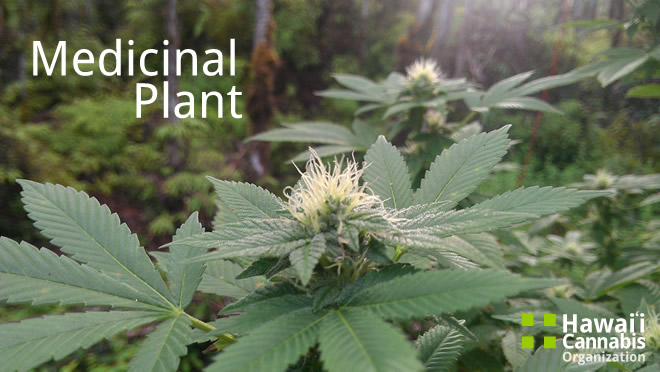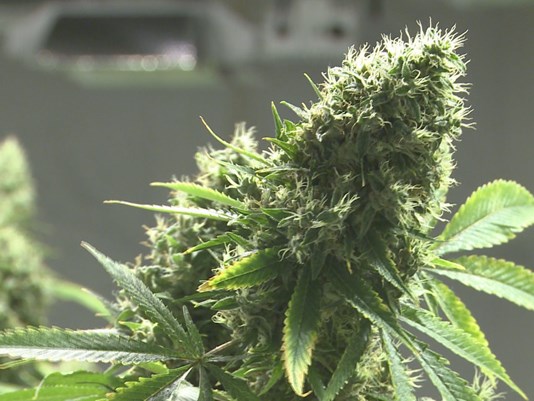Cognitive motor deficits in cannabis users.

Cannabis use affects cortico-striatal networks that are essential for producing movement. In this review, we summarize the literature on motor system dysfunction in cannabis users and provide a rationale for why motor learning should be considered an important area in cannabis research. A majority of studies have addressed cognitive impairments in cannabis users and some […]
A review of the additive health risk of cannabis and tobacco co-use.

INTRODUCTION: Cannabis and tobacco are the most widely used substances, and are often used together. The present review examines the toxicant exposure associated with co-use (e.g., carbon monoxide, carcinogens), co-use via electronic nicotine delivery systems (ENDS), and problematic methodological issues present across co-use studies. METHOD: An extensive literature search through PubMed was conducted and studies […]
Evidence-based policy? The re-medicalization of cannabis and the role of expert committees in the UK, 1972-1982.

BACKGROUND: Cannabis was introduced to the UK as a medical product in the nineteenth century. However, with questions over its safety, efficacy, and possible harms its medical role diminished and by the 1950s it was viewed as a drug of misuse. Nonetheless, scientific and lay knowledge around cannabis expanded from the 1960s and cannabis re-appeared […]
This Doctor Says Marinol is NOT Medical Cannabis

By: Dr. David Bearman For years, some law enforcement sources—many of who should know better—have referred to Marinol as prescription marijuana. Marinol® (dronabinol) is synthetic THC, it is not prescription marijuana. As you will see, that assertion is wrong by about 511 chemicals. Marinol is THC; just one of many chemical compounds found in cannabis, synthesized and […]
Factors associated with having a medical marijuana card among Veterans with recent substance use in VA outpatient treatment.

Psychiatric symptoms, somatic problems, and co-occurring substance use have been associated with medical marijuana consumption among civilian patients with substance use disorders. It is possible that these factors may impact Veterans’ ability to engage in or adhere to mental health and substance use disorder treatment. Therefore, we examined whether psychiatric functioning, substance use, and somatic […]
Cannabis clubs in Uruguay: The challenges of regulation.

BACKGROUND: The Uruguayan Cannabis Clubs (UCCs) constitute one of three ways to obtain cannabis under the new cannabis regulation laws. These organizations, formed by up to 45 adults and with a legal limit to grow up to 99 plants, appear to provide a safe method of procuring cannabis in a country that is trying to […]
Prevalence of comorbid bipolar and substance use disorders in clinical settings, 1990-2015: Systematic review and meta-analysis.

BACKGROUND: Comorbidity between substance use disorders (SUDs) and bipolar disorder (BD) is highly prevalent to the extent it may almost be regarded the norm. This systematic review and meta-analysis aimed to estimate the prevalence rates of SUDs in treatment seeking patients diagnosed with BD in both inpatient and outpatient settings. METHODS: A comprehensive literature search […]
Cognitive behavioral therapy program for cannabis use cessation in first-episode psychosis patients: study protocol for a randomized controlled trial.

BACKGROUND: The high rate of cannabis use among patients with first-episode psychosis (FEP), as well as the associated negative impact on illness course and treatment outcomes, underlines the need for effective interventions in these populations. However, to date, there have been few clinical treatment trials (of pharmacological or psychological interventions) that have specifically focused on […]
Marijuana And Alzheimer’s

Alzheimer’s disease and other forms of dementia may be the most heart-breaking of all ailments. As the population ages and life expectancy is extended, Alzheimer’s and dementia become ever more common. Alzheimer’s is now the sixth leading cause of death in the U.S. and it’s a factor in many more. One in three seniors has […]
Limitations to the Dutch cannabis toleration policy: Assumptions underlying the reclassification of cannabis above 15% THC.

The Netherlands has seen an increase in Δ9-tetrahydrocannabinol (THC) concentrations from approximately 8% in the 1990s up to 20% in 2004. Increased cannabis potency may lead to higher THC-exposure and cannabis related harm. The Dutch government officially condones the sale of cannabis from so called ‘coffee shops’, and the Opium Act distinguishes cannabis as a […]
Early Survey Results from the Minnesota Medical Cannabis Program.

As part of its legislative mandate, the Minnesota Department of Health’s Office of Medical Cannabis (OMC) is required to study and report on the state’s medical cannabis program. This article describes preliminary findings from the OMC’s research about who is using the program and whether patients and their certifying health care practitioners are noticing benefits […]
One Minute of Marijuana Secondhand Smoke Exposure Substantially Impairs Vascular Endothelial Function.

BACKGROUND: Despite public awareness that tobacco secondhand smoke (SHS) is harmful, many people still assume that marijuana SHS is benign. Debates about whether smoke-free laws should include marijuana are becoming increasingly widespread as marijuana is legalized and the cannabis industry grows. Lack of evidence for marijuana SHS causing acute cardiovascular harm is frequently mistaken for […]
Determination of 21 drugs in oral fluid using fully automated supported liquid extraction and UHPLC-MS/MS.

Collection of oral fluid (OF) is easy and non-invasive compared to the collection of urine and blood, and interest in OF for drug screening and diagnostic purposes is increasing. A high-throughput ultra-high-performance liquid chromatography-tandem mass spectrometry method for determination of 21 drugs in OF using fully automated 96-well plate supported liquid extraction for sample preparation […]
Stratifying delays for assessment by type of substance to improve the probability of attendance in outpatient services.

AIMS: 1) To confirm the association between delay for assessment (DFA) and probability of first-time attendance in outpatient substance use disorder (SUD) treatment. 2) To evaluate whether this association varies by the type of primary substance for which the assessment was requested. 3) To assess the possibility of estimating differential DFAs to conform to equal […]
Cannabis Use Surveillance By Sweat Analysis.

BACKGROUND: Sweat testing, an alternative matrix for establishing drug abuse, offers additional benefits to the more common biological samples. The authors developed a procedure using gas chromatography-mass spectrometry to test for Δ9-tetrahydrocannabinol, 11-nor-Δ9-tetrahydrocannabinol-9-carboxylic acid, cannabinol and cannabidiol in a sweat patch. The results were compared with urine and hair sample results. METHODS: Urine, hair, and […]
Assessing the Validity of Online Drug Forums as a Source for Estimating Demographic and Temporal Trends in Drug Use.

OBJECTIVES: Addiction researchers have begun monitoring online forums to uncover self-reported details about use and effects of emerging drugs. The use of such online data sources has not been validated against data from large epidemiological surveys. This study aimed to characterize and compare the demographic and temporal trends associated with drug use as reported in […]
Correlates of Marijuana Drugged Driving and Openness to Driving While High: Evidence from Colorado and Washington.

AIMS: A potential unintended consequence of legalizing recreational marijuana is increased marijuana-related driving impairment. Some states where recreational marijuana is legal have begun implementing interventions to mitigate driving under the influence (DUI) of marijuana, including media campaigns to increase knowledge about DUI laws. However, little is known about the associations between knowledge of DUI laws […]
The association between cannabis use and suicidality among men and women: A population-based longitudinal study.

BACKGROUND: Evidence regarding the role of sex differences in the association between cannabis use and suicidality is lacking. We explored sex differences in the bidirectional association between cannabis use and suicidality in a 3-year longitudinal study. METHODS: Data were drawn from waves 1 and 2 of the National Epidemiologic Survey on Alcohol and Related Conditions […]
A comparison between wastewater-based drug data and an illicit drug use survey in a selected community.

BACKGROUND: Estimations of drug use are mostly based on population surveys that can suffer from response biases. The current study evaluates using wastewater-based epidemiology (WBE) for assessing illicit drug use by comparing wastewater data with that from a population survey. METHODS: Introductory letters (29,083) were sent to inhabitants of Lier, Belgium, asking them to participate […]
Evaluation of first generation synthetic cannabinoids on binding at non-cannabinoid receptors and in a battery of in vivo assays in mice.

Anecdotal reports suggest that abused synthetic cannabinoids produce cannabis-like “highs,” but some of their effects may also differ from traditional cannabinoids such as Δ9-tetrahydrocannabinol (THC). This study examined the binding affinities of first-generation indole-derived synthetic cannabinoids at cannabinoid and noncannabinoid receptors and their effects in a functional observational battery (FOB) and drug discrimination in mice. […]
Steep Delay Discounting and Addictive Behavior: A Meta-Analysis of Continuous Associations.

AIMS: To synthesize continuous associations between delayed reward discounting (DRD) and both addiction severity and quantity-frequency (QF); to examine moderators of these relationships; and to investigate publication bias. METHODS: Meta-analysis of published studies examining continuous associations between DRD and addictive behaviors. Published, peer-reviewed studies on addictive behaviors (alcohol, tobacco, cannabis, stimulants, opiates, and gambling) were […]
Burden and risk factors for gastrointestinal symptom distress in HIV patients in the modern antiretroviral era.

In the modern antiretroviral (ARV) era, there is limited knowledge about the prevalence and risk factors for HIV patient-reported gastrointestinal (GI) symptoms (diarrhoea/soft stool, nausea/vomiting, bloating/painful abdomen, loss of appetite, and weight loss/wasting) and distress. We prospectively analysed data (2007-2014) on distressing GI symptoms from the Ontario HIV Treatment Network Cohort Study, which follows people […]
A preliminary evaluation of synthetic cannabinoid use among adolescent cannabis users: Characteristics and treatment outcomes.

Little is known regarding the use of synthetic cannabinoids (SC), particularly use among adolescent substance users who may be at higher risk. The present exploratory study seeks to describe SC use and subjective effects among cannabis-using adolescents as well as compare the characteristics of cannabis users who do and do not use SC. Exploratory analyses […]
Acute effects of cannabis on breath-holding duration.

Distress intolerance (an individual’s perceived or actual inability to tolerate distressing psychological or physiological states) is associated with cannabis use. It is unknown whether a biobehavioral index of distress intolerance, breath-holding duration, is acutely influenced (increased or decreased) by cannabis. Such information may further inform understanding of the expression of psychological or physiological distress postcannabis […]
Integrating environmental and self-report data to refine cannabis prevalence estimates in a major urban area of Switzerland.

BACKGROUND: Cannabis consumption is a topical subject because of discussions about reviewing current regulations. In this context, having a more comprehensive approach to assess and monitor prevalence and consumption is highly relevant. The objective of this work was to refine current estimates about prevalence of cannabis use by combining self-report data and results derived from […]
Acute Toxicity Associated with Use of 5F-Derivations of Synthetic Cannabinoid Receptor Agonists with Analytical Confirmation.

INTRODUCTION: Synthetic Cannabinoid Receptor Agonists (SCRAs) are the largest group of new psychoactive substances reported to the European Warning System and the United Nations Office on Drugs and Crime to date. The heterogeneous nature and speed of diversification of these compounds make it challenging to accurately characterise and predict harms of these compounds in pre-clinical […]
No Smoke without Tobacco: A Global Overview of Cannabis and Tobacco Routes of Administration and Their Association with Intention to Quit.

Cannabis and tobacco are common drugs of abuse worldwide and are often used in combination through various routes of administration (ROAs). Here, we aimed to provide an overview of how cannabis and tobacco routes varied across countries and assess the impact of tobacco-based ROAs on motivation to use less cannabis, and less tobacco, in different […]
Should we care about sativex-induced neurobehavioral effects? A 6-month follow-up study.

OBJECTIVE: Sativex® is an exclusive cannabinoid-based drug approved for the treatment of spasticity due to Multiple Sclerosis (MS). The most common side effects include dizziness, nausea, and somnolence. However, it is still under debate whether the drug could cause negative cognitive effects. The aim of our study was to investigate the effect of Sativex® on […]
Qualitative research in Spanish cannabis social clubs: “The moment you enter the door, you are minimising the risks”.

BACKGROUND: Cannabis social clubs (CSCs) in Spain are non-profit organisations that connect regular adult cannabis users. One of their functions is to supply cannabis to the closed circuit of members. The CSCs do not breach any international treaties. The aim of the paper is to present the findings of a qualitative study among Spanish CSCs […]
Psychiatric comorbidity associated with synthetic cannabinoid use compared to cannabis.

BACKGROUND: Synthetic cannabinoids (SC) use has had a dramatic increase in recent years, but data regarding their adverse effects on mental health is limited. In this study, we compared clinical presentations of SC users with cannabis users in a psychiatric inpatient setting. METHODS: Digital charts of all patients who were admitted to a dual diagnosis […]
A Test-Replicate Approach to Candidate Gene Research on Addiction and Externalizing Disorders: A Collaboration Across Five Longitudinal Studies.

This study presents results from a collaboration across five longitudinal studies seeking to test and replicate models of gene-environment interplay in the development of substance use and externalizing disorders (SUDs, EXT). We describe an overview of our conceptual models, plan for gene-environment interplay analyses, and present main effects results evaluating six candidate genes potentially relevant […]
Investigation of a recently detected 11-nor-9-carboxy-Δ(9)-tetrahydrocannabinol isomer: Studies on the degradation of 11-nor-9-carboxy-Δ(9)-tetrahydrocannabinol glucuronide.

An isomer of the tetrahydrocannabinol (THC) metabolite 11-nor-9-carboxy-Δ9-THC (THCCOOH) had been detected in blood of cannabis users. The present study was initiated to elucidate whether the labile metabolite THCCOOH-glucuronide could be the precursor. THCCOOH-glucuronide was incubated in human serum and albumin (HSA) solution at various temperatures (-18, 4.5, 22 and 37°C) and pH values (pH […]
Immediate drop-out rate in adolescent substance abusers: an out-patient chart review from North India.

INTRODUCTION: Although a number of management strategies are available for adolescent substance abusers, the outcomes are limited due to high drop out. The factors related to drop out in adolescent substance users, especially in low and middle income countries (LAMIC) have been sparsely studied. OBJECTIVE: To study the personal, family and clinical variables related to […]
Individual and population level impacts of illicit drug use, sexual risk behaviours on sexually transmitted infections among young Aboriginal and Torres Strait Islander people: results from the GOANNA survey.

BACKGROUND: Sexually transmitted infections (STIs) have been increasing among Australian Indigenous young people for over two decades. Little is known about the association between alcohol and other drug use and sexual risk behaviours and diagnosis of STIs among this population. METHODS: A cross-sectional, community based self-administered survey was conducted among young Aboriginal people aged 16-29 […]
Cannabinoids, inflammation, and fibrosis.

Cannabinoids apparently act on inflammation through mechanisms different from those of agents such as nonsteroidal anti-inflammatory drugs (NSAIDs). As a class, the cannabinoids are generally free from the adverse effects associated with NSAIDs. Their clinical development thus provides a new approach to treatment of diseases characterized by acute and chronic inflammation and fibrosis. A concise […]
The Genetic and Environmental Association Between Parental Monitoring and Risk of Cannabis, Stimulants, and Cocaine Initiation in a Sample of Male Twins: Does Parenting Matter?

Our aim was to test the direction of causation between self-report parental monitoring (PM) and the liability to illicit drug initiation (DI) as indicated by cannabis, cocaine, and stimulants. We fitted a multiple indicator model to test causal and non-causal models based on a large, genetically informative cross-sectional sample of male twins. The sample comprised […]
Low-coverage, whole-genome sequencing of Artocarpus camansi (Moraceae) for phylogenetic marker development and gene discovery.

PREMISE OF THE STUDY: We used moderately low-coverage (17×) whole-genome sequencing of Artocarpus camansi (Moraceae) to develop genomic resources for Artocarpus and Moraceae. METHODS AND RESULTS: A de novo assembly of Illumina short reads (251,378,536 pairs, 2 × 100 bp) accounted for 93% of the predicted genome size. Predicted coding regions were used in a […]
Magnitude and duration of cue-induced craving for marijuana in volunteers with cannabis use disorder.

AIMS: Evaluate magnitude and duration of subjective and physiologic responses to neutral and marijuana (MJ)-related cues in cannabis dependent volunteers. METHODS: 33 volunteers (17 male) who met DSM-IV criteria for Cannabis Abuse or Dependence were exposed to neutral (first) then MJ-related visual, auditory, olfactory and tactile cues. Mood, drug craving and physiology were assessed at […]
Effect of combined oral doses of Δ(9)-tetrahydrocannabinol (THC) and cannabidiolic acid (CBDA) on acute and anticipatory nausea in rat models.

RATIONALE: The purpose of this study was to evaluate the potential of oral combined cannabis constituents to reduce nausea. OBJECTIVE: The objective of this study was to determine the effect of combining subthreshold oral doses of Δ9-tetrahydrocannabinol (THC) and cannabidiolic acid (CBDA) on acute and anticipatory nausea in rat models of conditioned gaping. MATERIAL AND […]
Transdiagnostic processes linking anxiety symptoms and substance use problems among adolescents.

BACKGROUND: Numerous anxiety syndromes co-occur with substance use problems in adolescents, though the mechanisms underlying these comorbidities are not well understood. Three transdiagnostic processes-anxiety sensitivity (fear of anxiety-related sensations), distress tolerance (capacity to withstand emotional distress), and negative urgency (propensity to respond impulsively to negative emotion)-have been implicated in various anxiety and substance use problems. […]
Genetic and Environmental Contributions to the Association Between Cannabis Use and Psychotic-Like Experiences in Young Adult Twins.

To investigate contributions of genetic and environmental risk factors and possible direction of causation for the relationship between symptoms of cannabis use disorders (CUD) and psychotic-like experiences (PLEs), a population-based sample of 2793 young adult twins (63.5% female, mean [range] age 28.2 [19-36] y) were assessed for symptoms of CUD and PLEs using the Composite […]
Small Molecule Detection in Saliva Facilitates Portable Tests of Marijuana Abuse.

As medical and recreational use of cannabis, or marijuana, becomes more prevalent, law enforcement needs a tool to evaluate whether drivers are operating vehicles under the influence of cannabis, specifically the psychoactive substance, tetrahydrocannabinol (THC). However, the cut-off concentration of THC that causes impairment is still controversial, and current on-site screening tools are not sensitive […]
Clozapine users in Australia: their characteristics and experiences of care based on data from the 2010 National Survey of High Impact Psychosis.

AIMS: Clozapine is the most effective medication for treatment refractory schizophrenia. However, descriptions of the mental health and comorbidity profile and care experiences of people on clozapine in routine clinical settings are scarce. Using data from the 2010 Australian Survey of High Impact Psychosis, we aimed to examine the proportion of people using clozapine, and […]
Alterations in taste perception due to recreational drug use are due to smoking a substance rather than ingesting it.

Two studies explored the differences in tastant (salt, sour, bitter, sweet and spicy) concentration preference between recreational drug users and abstainers. In study 1, 250 opportunistically recruited abstainers, cannabis only users and multiple-drug users completed psychometric questionnaires and a concentration preference tastant test. In study 2, 76 participants purposefully recruited abstainers, daily tobacco users, recreational […]
Anxiety, depression and risk of cannabis use: Examining the internalising pathway to use among Chilean adolescents.

BACKGROUND: Adolescents who experience internalising symptoms may be susceptible to the use of alcohol and other substances in an attempt to alleviate or cope with these symptoms. We examined the hypothesised internalising pathway from symptoms of depression, generalised anxiety, social anxiety and panic, to incidence and frequency of cannabis use 18 months later. METHOD: Longitudinal […]
[Cannabis: Effects in the Central Nervous System. Therapeutic, societal and legal consequences].

The consumption of marijuana extracted from Cannabis sativa and indica plants involves an important cultural impact in Mexico. Their psychological stimulatory effect is widely recognized; their biochemical and molecular components interact with CB1 and CB2 (endocannabinoid system) receptors in various central nervous system structures (CNS) and immune cells. The psychoactive element Δ-9-tetrahydrocannabinol (THC) can be […]
Cannabinoids for fibromyalgia.

BACKGROUND: This review is one of a series on drugs used to treat fibromyalgia. Fibromyalgia is a clinically well-defined chronic condition of unknown aetiology characterised by chronic widespread pain that often co-exists with sleep problems and fatigue affecting approximately 2% of the general population. People often report high disability levels and poor health-related quality of […]
Growing Up With the Right to Marry: Sexual Attraction, Substance Use, and Well-Being of Dutch Adolescents.

PURPOSE: To assess the well-being and substance use of sexual minority adolescents growing up in a tolerant society, we examined differences among same-sex attracted (SSA), those who do not know their attraction yet (not yet attracted [NYA]), and heterosexual Dutch adolescents. METHODS: Unadjusted and adjusted logistic and linear multilevel analyses were performed using representative data […]
Differential effects of sex on substance use between first episode psychosis patients and healthy people.

BACKGROUND: Substance use in psychosis is an important field of study given that it can be a risk factor for the development of psychosis and can give rise to psychotic symptoms. Studies of substance use in first episode psychosis patients do not frequently assess non-pathological substance consumption among patients, but rather the prevalence of substance […]
Synthetic cannabinoids to avoid urine drug screens: Implications for contingency management and other treatments for drug dependence.

Contingency management (CM) is an effective treatment for substance use dependence. Within CM, rewards or vouchers promote continued abstinence by acting as alternative reinforcers to substance use. However, CM relies on the use of accurate biochemical verification methods, such as urinalysis, to verify abstinence. Synthetic cannabinoids (SCs) pose a risk for CM treatment because they […]
Long-term hippocampal glutamate synapse and astrocyte dysfunctions underlying the altered phenotype induced by adolescent THC treatment in male rats.

Cannabis use has been frequently associated with sex-dependent effects on brain and behavior. We previously demonstrated that adult female rats exposed to delta-9-tetrahydrocannabinol (THC) during adolescence develop long-term alterations in cognitive performances and emotional reactivity, whereas preliminary evidence suggests the presence of a different phenotype in male rats. To thoroughly depict the behavioral phenotype induced […]
Subjective aggression during alcohol and cannabis intoxication before and after aggression exposure.

RATIONALE: Alcohol and cannabis use have been implicated in aggression. Alcohol consumption is known to facilitate aggression, whereas a causal link between cannabis and aggression has not been clearly demonstrated. OBJECTIVES: This study investigated the acute effects of alcohol and cannabis on subjective aggression in alcohol and cannabis users, respectively, following aggression exposure. Drug-free controls […]
Simultaneous quantification of 11 cannabinoids and metabolites in human urine by liquid chromatography tandem mass spectrometry using WAX-S tips.

A comprehensive cannabinoid urine quantification method may improve clinical and forensic result interpretation and is necessary to support our clinical research. A liquid chromatography tandem mass spectrometry quantification method for ∆9-tetrahydrocannabinol (THC), 11-hydroxy-THC (11-OH-THC), 11-nor-9-carboxy-THC (THCCOOH), ∆9-tetrahydrocannabinolic acid (THCAA), cannabinol (CBN), cannabidiol (CBD), cannabigerol (CBG), ∆9-tetrahydrocannabivarin (THCV), 11-nor-9-carboxy-THCV (THCVCOOH), THC-glucuronide (THC-gluc), and THCCOOH-glucuronide (THCCOOH-gluc) in […]
Storage and disposal of medical cannabis among patients with cancer: Assessing the risk of diversion and unintentional digestion.

BACKGROUND: Increasingly more jurisdictions worldwide are legalizing medical cannabis. Major concerns related to such policies are that improper storage and disposal arrangements may lead to the diversion and unintentional digestion of cannabis. These concerns are particularly acute among patients with cancer because they take home medical cannabis for extended periods and have high rates of […]
Prevalence of cannabis and cocaine consumption in French fishermen in South Atlantic region in 2012-2013 and its policy consequences.

BACKGROUND: The aim of the study was to evaluate the use of cannabis and cocaine among fishermen followed in occupational medicine in the ports of Aquitaine and Charente-Maritime (Direction interrégionale de la mer Sud-Atlantique [DIRM-SA]). MATERIALS AND METHODS: Thousand fishermen could be recruited during medical regulatory examination by the occupational physicians and nurses of Occupational […]
Women and Men Admitted for Alcohol Intoxication at an Emergency Department: Alcohol Use Disorders, Substance Use and Health and Social Status 7 Years Later.

AIMS: To assess the prevalence of alcohol use disorder (AUD), substance use, mental health and social status 7 years following an Emergency Department (ED) admission for alcohol intoxication. To assess gender differences in these prevalences. METHODS: Cohort of 631 patients aged 18-30 years admitted for alcohol intoxication in 2006-2007 at a tertiary referral hospital in […]
Gender disparity in addiction: an Italian epidemiological sketch.

INTRODUCTION: Gender disparity in different fields of addiction such as tobacco smoking, alcohol use, drugs of abuse consumption and doping practice has been investigated in Italian population. METHODS: We used the surveys and studies carried out for the above reported issues in recent years as revised by the “National Observatory on Tobacco smoke, Drugs of […]
Δ9-Tetrahydrocannabinolic acid synthase: the application of a plant secondary metabolite enzyme in biocatalytic chemical synthesis.

Δ9-Tetrahydrocannabinolic acid synthase (THCAS) from the secondary metabolism of Cannabis sativa L. catalyzes the oxidative formation of an intramolecular C-C bond in cannabigerolic acid (CBGA) to synthesize Δ9-tetrahydrocannabinolic acid (THCA), which is the direct precursor of Δ9-tetrahydrocannabinol (Δ9-THC). Aiming on a biotechnological production of cannabinoids, we investigated the potential of the heterologously produced plant oxidase […]
[Synthetic Cannabinoid Receptor Agonist-Associated Psychotic Disorder: A Case Report].

Synthetic cannabinoid receptor agonists (SCRA) has become one of the most abused substances, recently. JWH-018 street name known as Bonzai is one of the most abused substances in Turkish Republic of Northern Cyprus. The most common symptoms in cases reported with synthetic cannabis use are agitation, angry, paranoia and reference delusions, disorientation, seizure and nausea. […]
Nicotinic acetylcholine receptor availability in cigarette smokers: effect of heavy caffeine or marijuana use.

RATIONALE: Upregulation of α4β2* nicotinic acetylcholine receptors (nAChRs) is one of the most well-established effects of chronic cigarette smoking on the brain. Prior research by our group gave a preliminary indication that cigarette smokers with concomitant use of caffeine or marijuana have altered nAChR availability. OBJECTIVE: We sought to determine if smokers with heavy caffeine […]
[The current aspects of the use of ecstasy/MDMA in France].

Methylenedioxymethamphetamine (MDMA), the active compound of ecstasy, has been used for several years, especially by young adults to benefit of psychostimulant properties. By raising the level of neuromodulators in the synapsis, MDMA can cause psychiatric and physical injuries. After reduced supplies in 2009 (number of ecstasy seizures equal to 10 percent of those recorded in […]
Concordance of ICD-11 and DSM-5 definitions of alcohol and cannabis use disorders: a population survey.

The proposed criteria for alcohol and cannabis use disorders in the 11th edition of ICD (ICD-11) will be presented to the World Health Assembly in 2017, but the beta-phase descriptions have been released. We compared them with those in the tenth edition (ICD-10) and the American Psychiatric Association’s DSM fourth edition (DSM-IV) and fifth edition […]
Does cannabidiol have a role in the treatment of schizophrenia?

Schizophrenia is a debilitating psychiatric disorder which places a significant emotional and economic strain on the individual and society-at-large. Unfortunately, currently available therapeutic strategies do not provide adequate relief and some patients are treatment-resistant. In this regard, cannabidiol (CBD), a non-psychoactive constituent of Cannabis sativa, has shown significant promise as a potential antipsychotic for the […]
Evaluation of a German version of the Strengthening Families Programme 10-14: a randomised controlled trial.

BACKGROUND: The purpose of this study is to evaluate the effects of a German adaptation of the Strengthening Families Programme 10-14 (SFP 10-14; Familien Stärken). METHODS: A multi-centre randomised controlled trial comparing the German SFP version consisting of seven sessions and four booster-sessions with a minimal intervention on parenting as control condition. Outcomes comprise measures […]
Transient Retinal Dysfunctions after Acute Cannabis Use.

Although cannabis is very widespread worldwide, the impact of cannabis on visual function remains poorly understood. This is partly due to numerous difficulties met in developing clinical studies in cannabis users. Here, we report the first documented case of neuroretinal dysfunction after acute cannabis smoking. This observation was favored by the need of an annual […]
The endocannabinoid system – a target for the treatment of LUTS?

Lower urinary tract symptoms (LUTS) are common in all age groups and both sexes, resulting in tremendous personal suffering and a substantial burden to society. Antimuscarinic drugs are the mainstay of symptom management in patients with LUTS, although their clinical utility is limited by the high prevalence of adverse effects, which often limit patients’ long-term […]
Characteristics of Synthetic Cannabinoid and Cannabis Users Admitted to a Psychiatric Hospital: A Comparative Study.
BACKGROUND: Psychotic and affective exacerbations associated with synthetic cannabinoid (SC) use are becoming an emerging concern in psychiatric hospitals. However, data are lacking regarding whether clinical manifestations of SC use differ from those associated with cannabis use. OBJECTIVE: Our aim was to explore the unique profile of SC users admitted to a mental health center […]
Illicit substance use among persons admitted to probation polyclinic of a regional mental hospital in the Eastern Anatolia, Turkey.

OBJECTIVES: To investigate the illicit substance use trends by gender and year in Eastern Turkey, Elazığ. METHODS: This is a retrospective study designed to assess the drug use prevalence in persons who admitted to the Probation Policlinic of Elazig Mental Health Hospital between January 2011 and December 2014 in Eastern Turkey, Elazığ. Laboratory screening tests […]
Discrimination, Mental Health, and Substance Use Disorders Among Sexual Minority Populations.

PURPOSE: Sexual minority (lesbian, gay, bisexual) populations have a higher prevalence of mental health and substance use disorders compared to their heterosexual counterparts. Such disparities have been attributed, in part, to minority stressors, including distal stressors such as discrimination. However, few studies have examined associations between discrimination, mental health, and substance use disorders by gender […]
Unusual side effect of cannabis use: acute abdomen due to duodenal perforation.

BACKGROUND: The chronic use of synthetic cannabinoids (SCs) which has become an increasingly prevalent problem can rarely cause gastric and duodenal ulcer because of their effects on gastric secretion and emptying. Since peptic ulcer disease (PUD) is a rarely seen entity in patients who consult to the emergency service with complaints of abdominal pain, most […]
Substance use and criminality among juveniles-under-enquiry in New Delhi.

BACKGROUND: There is an intimate relationship between drugs and criminal behavior. The drug-violence relationship is further complicated by intoxicating doses and/or withdrawal effects of specific drugs. Understanding this relationship is important for both healthcare workers and policy makers. MATERIALS AND METHODS: The study was conducted in Prayas observation home for boys, a short stay home […]
Can smoking initiation contexts predict how adult Aboriginal smokers assess their smoking risks? A cross-sectional study using the 'Smoking Risk Assessment Target'.

OBJECTIVES: Smoking prevalence is slow to reduce among Indigenous Australians of reproductive age. We analysed the relationships between age of smoking initiation, recalled initiation influences and self-assessment of smoking risks in Aboriginal smokers. DESIGN, SETTING AND PARTICIPANTS: A community-based cross-sectional survey of Aboriginal smokers aged 18-45 years (N=121; 58 men) was undertaken, using single-item measures. The […]
Cross-section and panel estimates of peer effects in early adolescent cannabis use: With a little help from my 'friends once removed'.

Peer effects in adolescent cannabis are difficult to estimate, due in part to the lack of appropriate data on behaviour and social ties. This paper exploits survey data that have many desirable properties and have not previously been used for this purpose. The data set, collected from teenagers in three annual waves from 2002 to […]
Exposure to environmental factors increases connectivity between symptom domains in the psychopathology network.

BACKGROUND: We investigated to what degree environmental exposure (childhood trauma, urbanicity, cannabis use, and discrimination) impacts symptom connectivity using both continuous and categorical measures of psychopathology. METHODS: Outcomes were continuous symptom dimensions of self-reported psychopathology using the Self-report Symptom Checklist-90-R in 3021 participants from The Early Developmental Stages of the Psychopathology (EDSP) study and binary […]
Genetic variation in FAAH is associated with cannabis use disorders in a young adult sample of Mexican Americans.

BACKGROUND: Cannabis is a commonly used drug and studies have shown that a significant portion of the variation in cannabis use disorders (CUDs) is heritable. Five genes known to play a role in the endocannabinoid system and CUDs were examined in a community sample of young adult Mexican Americans (MAs): CNR1, MGLL, FAAH, DAGLA, and […]
Two new species of Cossinae (Lepidoptera: Cossidae) from Sindh Province of Pakistan.

The Cossidae fauna of Pakistan is still poorly studied, with only a few species reported: Eremocossus foedus (Swinhoe, 1884), Aholcocerus ronkayorum Yakovlev, 2006, Cossulus griseatellus Yakovlev, 2006 and Phragmataecia gurkoi Yakovlev, 2007. The carpenter moths of Zeuzera Latreille, 1804 (Zeuzera sp. and Z. multistrigata Moore, 1881) have been reported in pest management publications from Pakistan […]
Prevalence and correlates of prescription opioid residue injection.

BACKGROUND: There is growing evidence of intravenous administration of prescription opioids (POs) in several countries. Preparation of POs for injection may leave residues in containers and filters used by people who inject drugs and may lead to adverse health outcomes if they are injected. METHODS: This exploratory study used cross-sectional data from the COSMO study, […]
Cannabis consumption patterns among frequent consumers in Uruguay.

BACKGROUND: In 2013, Uruguay became the first country to fully regulate the cannabis market, which now operates under state control. Cannabis can be legally acquired in three ways: growing it for personal use (self-cultivation), cannabis club membership, and from pharmacies (not yet implemented). Users must be entered into a confidential official registry to gain access. […]
The Structure-Function Relationships of Classical Cannabinoids: CB1/CB2 Modulation.
The cannabinoids are members of a deceptively simple class of terpenophenolic secondary metabolites isolated from Cannabis sativa highlighted by (-)-Δ(9)-tetrahydrocannabinol (THC), eliciting distinct pharmacological effects mediated largely by cannabinoid receptor (CB1 or CB2) signaling. Since the initial discovery of THC and related cannabinoids, synthetic and semisynthetic classical cannabinoid analogs have been evaluated to help define […]
Alcohol, Substance Use and Psychosocial Competence of Adolescents in Selected Secondary Schools in Uganda: A Cross Sectional Survey.

AIMS: 1) To determine the nature and extent of alcohol and substance use and 2) To describe the relationship between alcohol use and psychosocial competence among secondary school youths in Northern and Central Uganda. STUDY DESIGN: This was a cross-sectional study. PLACE AND DURATION OF STUDY: Departments of Mental Health, Gulu University (Northern Uganda) and […]
Therapeutic approach to pain in neurodegenerative diseases: current evidence and perspectives.

INTRODUCTION Neurodegenerative diseases are increasing in parallel to the lengthening of survival. The management of Alzheimer’s disease (AD) and other dementias, Parkinson’s disease (PD) and PD-related disorders, and motor neuron diseases (MND), is mainly targeted to motor and cognitive impairment, with special care for vital functions such as breathing and feeding. AREAS COVERED The present […]
A content analysis of tweets about high-potency marijuana.

INTRODUCTION: “Dabbing” involves heating extremely concentrated forms of marijuana to high temperatures and inhaling the resulting vapor. We studied themes describing the consequences of using highly concentrated marijuana by examining the dabbing-related content on Twitter. METHODS: Tweets containing dabbing-related keywords were collected from 1/1-1/31/2015 (n=206,854). A random sample of 5000 tweets was coded for content […]
Use of Embryos Extracted from Individual Cannabis sativa Seeds for Genetic Studies and Forensic Applications.

Legal limits on the psychoactive tetrahydrocannabinol (THC) content in Cannabis sativa plants have complicated genetic and forensic studies in this species. However, Cannabis seeds present very low THC levels. We developed a method for embryo extraction from seeds and an improved protocol for DNA extraction and tested this method in four hemp and six marijuana […]
Cannabinoids for Symptom Management and Cancer Therapy: The Evidence.

Cannabinoids bind not only to classical receptors (CB1 and CB2) but also to certain orphan receptors (GPR55 and GPR119), ion channels (transient receptor potential vanilloid), and peroxisome proliferator-activated receptors. Cannabinoids are known to modulate a multitude of monoamine receptors. Structurally, there are 3 groups of cannabinoids. Multiple studies, most of which are of moderate to […]
David Casarett's Stoned: A Doctor's Case for Medical Marijuana.

With legal cannabis sales at $5.4 billion in 2015 and expected to rise by another billion this year in the United States, legalization and marijuana’s impact on health is a hot topic of national debate. Casarett, a physician at the University of Pennsylvania, immerses himself in the culture, science, and smoke of medical marijuana in […]
Predictors and Profiles of Antiretroviral Therapy Adherence Among African American Adolescents and Young Adult Males Living with HIV.

Adherence to antiretroviral therapy (ART) is crucial for thwarting HIV disease progression and reducing secondary HIV transmission, yet youth living with HIV (YLH) struggle with adherence. The highest rates of new HIV infections in the United States occur in young African American men. A sample of 387 HIV-positive young African American males on ART was […]
Endocannabinoids in the Gut.

Cannabis has been used medicinally for centuries to treat a variety of disorders, including those associated with the gastrointestinal tract. The discovery of our bodies’ own “cannabis-like molecules” and associated receptors and metabolic machinery – collectively called the endocannabinoid system – enabled investigations into the physiological relevance for the system, and provided the field with […]
Acute Poisonings from Synthetic Cannabinoids – 50 U.S. Toxicology Investigators Consortium Registry Sites, 2010-2015.

Recent reports suggest that acute intoxications by synthetic cannabinoids are increasing in the United States (1,2). Synthetic cannabinoids, which were research compounds in the 1980s, are now produced overseas; the first shipment recognized to contain synthetic cannabinoids was seized at a U.S. border in 2008 (3). Fifteen synthetic cannabinoids are Schedule I controlled substances (3), […]
Fluorinated Cannabidiol Derivatives: Enhancement of Activity in Mice Models Predictive of Anxiolytic, Antidepressant and Antipsychotic Effects.

Cannabidiol (CBD) is a major Cannabis sativa constituent, which does not cause the typical marijuana psychoactivity. However, it has been shown to be active in a numerous pharmacological assays, including mice tests for anxiety, obsessive-compulsive disorder, depression and schizophrenia. In human trials the doses of CBD needed to achieve effects in anxiety and schizophrenia are […]
Psychiatric comorbidities in opioid-dependent patients undergoing a replacement therapy programme in Spain: The PROTEUS study.

Opioid-dependent patients show a high rate of psychiatric comorbidities. The prevalence and characteristics of patients with dual diagnosis have not been well established in Spanish opioid agonist treatment (OAT) programmes. Thus, 621 opioid-dependent patients enrolled in OAT programmes were assessed, using the EuropASI questionnaire, for psychiatric comorbidities, which were detected in 67% of patients (anxiety […]
Study: Medical Marijuana Laws Linked To Less Prescription Drug Use, Medicare Spending

The enactment of statewide medicinal cannabis laws is associated with a quantifiable decline in the use of traditional prescription drugs, according to data published in the July edition of the scientific journal Health Affairs. Investigators at the University of Georgia assessed the relationship between medical marijuana legalization laws and physicians’ prescribing patterns in 17 states […]
Cannabis Education and Awareness

Cannabis Event in Hilo, Hawaii NOTE: This Event has passed. Visit Events page for the latest announcements on upcoming events. Subscribe to Stay Informed ——————————————– June 3rd Doors Open 5pm Starts 5:30pm Hawaii Innovation Center at Hilo Patient and Caregiver Question and Answer Session with the Presenters Seating Limited $7 tickets in advance – buy […]
Cannabis Breeder’s Rights

“I don’t want to own my strains. I don’t want to patent it. But my biggest fear is that someone else will take my work and prevent me from working with it. And I see as the only solution to this is to make all of this public domain and open source,” DJ Short, Seattle […]
Research Study | Effect of Medicinal Cannabis on Pain and Quality of Life

Login here or Become a Paid Member, to View this content. Mahalo
Adderall Alternative: Which Strains Behave Like Amphetamine

Login here or Become a Paid Member, to View this content. Mahalo
Check Out OG Analytical Presents: Cannabis Science Pub
I came across the following event on Facebook. It sounds very cool. Who doesn’t want to learn more about cannabis science?: OG Analytical presents: Cannabis Science Pub! A FREE monthly educational series on the science of Cannabis. Join OG Analytical every last Tuesday at Cozmic as we explore the science of Cannabis. Play trivia to
Meet The Man That Discovered The Endocannabinoid System
I received the following message and thought it was worth passing along: Have you ever heard of the endocannabinoid system? Meet the man who discovered it at #Unity16 March 18-22 in Washington, D.C. ASA is thrilled to announce the Keynote Speaker for the 4th Annual National Medical Cannabis Unity Conference is Professor Lumír Hanuš! Prof.
The Scientist

Login here or Become a Paid Member, to View this content. Mahalo
Lab Science and Standards: Myths Facts and Creating a Unified Consensus

Key questions related to Hawaii’s Controlled Substances Act (329) and Chapter 11-850 of the Hawaii Administrative Rules with respect to required laboratory testing: Is Patient, product and public safety achieved through laboratory testing? Will the testing laws developed by legislators, law enforcement and the Hawaii Department of Health Approved Testing Laboratories detect everything in Cannabis from licensed dispensaries. […]
Hawaii Medical Marijuana Dispensary License List of Applicants

Hawaii State Department of Health (DOH) released the list of applicants for Medical Marijuana Dispensary Licenses. Sixty-six applications were received during the application period of Jan. 12, 2016, 8 a.m., Hawaii Standard Time (HST) to Jan. 29, 2016, 4:30 p.m. HST. The names of all individual applicants and applying entities as well as the county applied for […]
